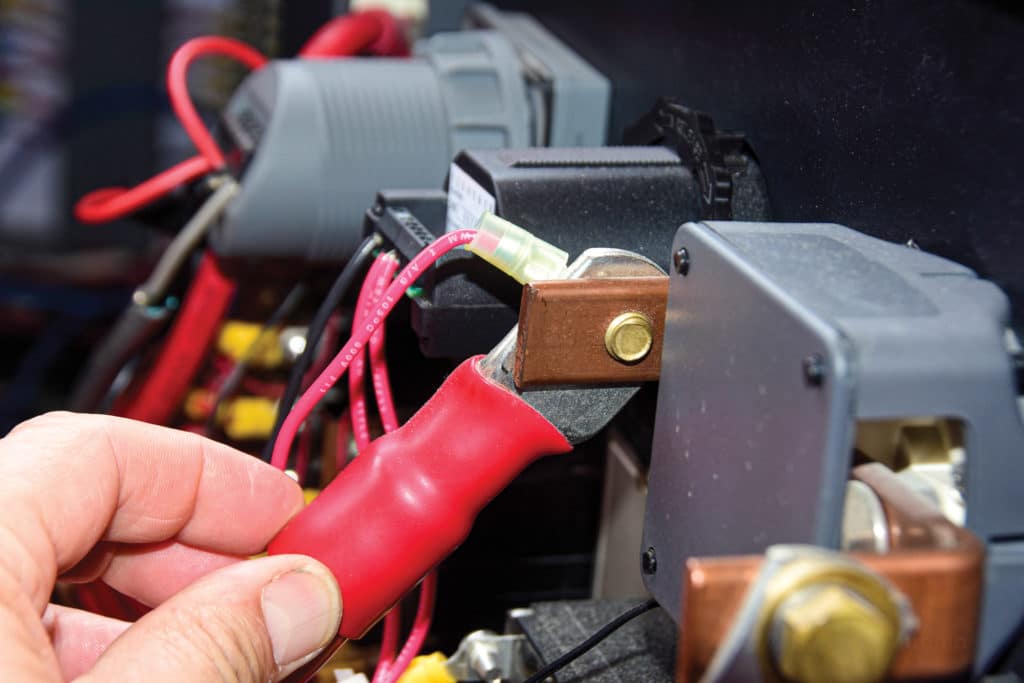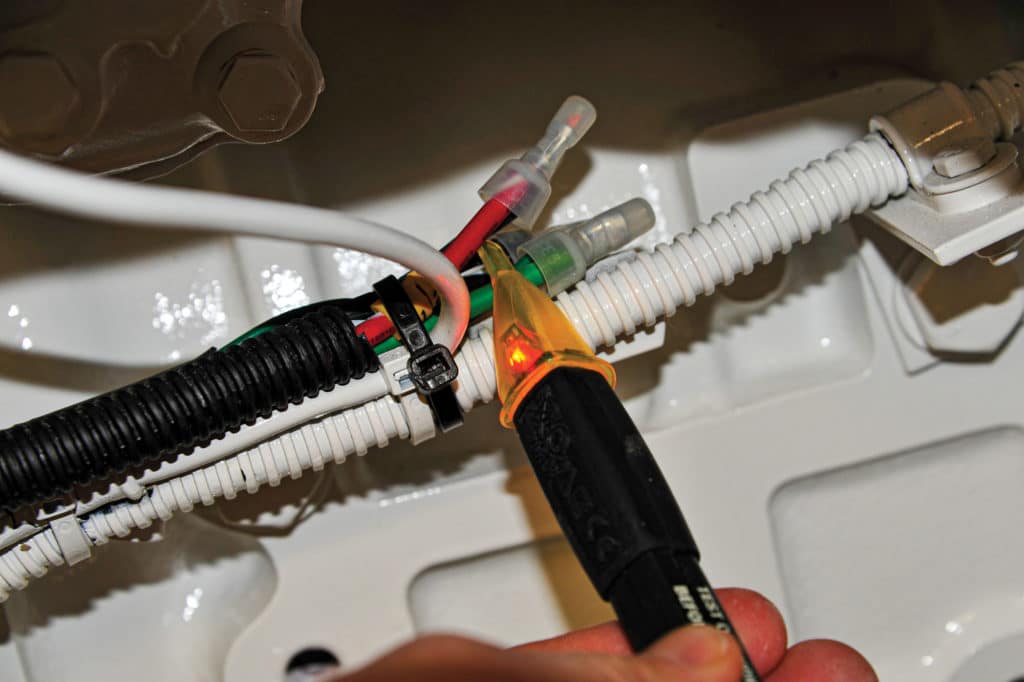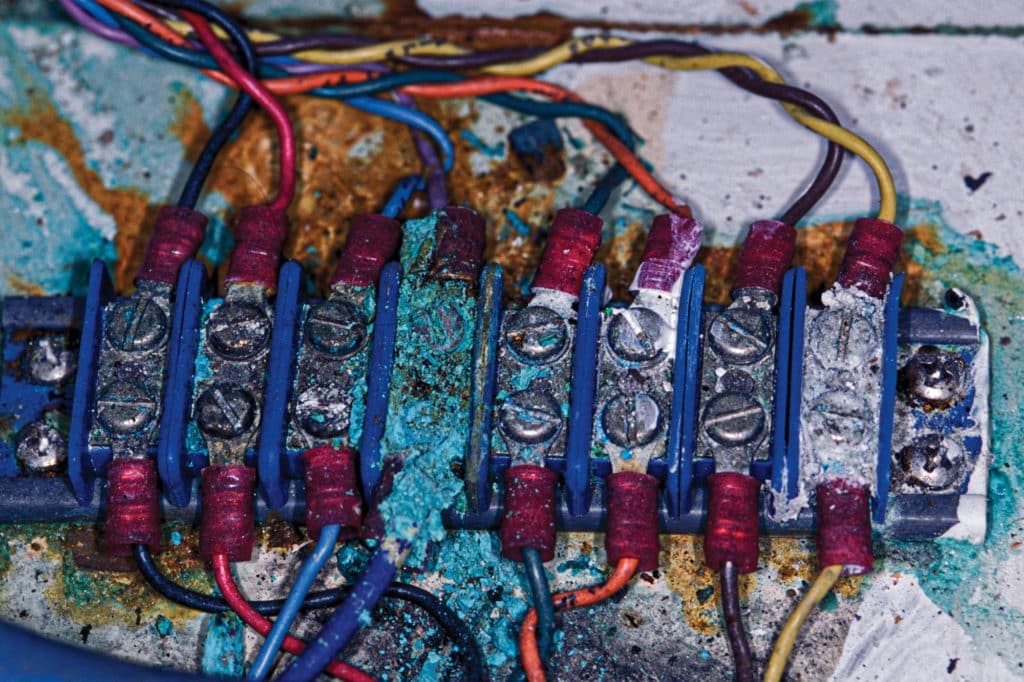
It’s a scenario I encounter with alarming regularity: electrical cabling routed in ways it was never meant to be. I’ve seen examples through sharp cutouts in bulkheads, over engine bell housings, around motor-mount brackets, through bilge water…the examples are nearly endless.
Achieving reliability in a marine electrical system is no small feat. The environment is obviously harsh, wet, salty, vibration-prone and, at times, bone-jarring. Add to that temperature extremes caused by the seasons and engine heat, and you have the makings of a perfect storm of electrical unreliability. However, following just a few good wiring practices can eliminate the vast majority of electrical failures and calamities.
Start by getting into the casual habit of paying attention to wiring every time you encounter it: in cabinets, the engine compartment, sail lockers, bilges and, of course, behind and adjacent to the electrical panel itself. You must be mindful of AC power sources such as shore power, gensets and inverters; if any of these are energized or running, unless you know for sure otherwise, then assume every exposed terminal is live AC 120-volt power. Using a tool such as a noncontact AC-voltage detector (always test it first on a known, live AC source before relying on it to alert you to an unknown AC source) will enable you to determine if wiring is energized.

However, even then you must use caution because an inverter that is in sleep mode and producing no power can generate electrocution potential if you touch an energized terminal.
The only way to be sure an inverter cannot harm you is to disconnect it from its DC power source, either with a disconnect switch (all inverter DC positive cables should be switched for this reason, and to deenergize in the event of a fire) or by removing its fuse. While 12- and 24-volt DC power won’t electrocute you, you can cause a short circuit, which could lead to a fire. Remove all metallic jewelry and watches before working around any electrical connections, even if you believe them to be dead.
Read more from Steve D’Antonio: Monthly Maintenance
Look for wires that lack support; American Boat and Yacht Council standards call for all wires to be supported at least every 18 inches. Look for wires that enter metallic chassis or junction boxes that lack strain relief and chafe protection, often known as cord grips. If you can pull on a wire that enters the chassis of a battery charger or inverter, for example, and impart strain on the connection within, that’s a violation of the standard, and an invitation to a failure.

Check ring terminals wherever you encounter them, and make sure the screw that supports them is tight; if you can twist the terminal under the screw head, it’s too loose. Ring terminals should be installed in size order: largest first, then successively smaller, and no more than four per screw or stud. Of course, if you see any green crustiness, then that is clearly a problem as well.
With one exception, every energized wire (i.e., DC positive or AC “hot”) must be protected by a fuse or circuit breakers. These overcurrent-protection devices have one primary mission: to protect the wire in the event of a short. Without them, a short circuit would cause the wire to rapidly overheat, and if it’s adjacent to something flammable—like almost everything we use to build boats, including fiberglass, timber and fabric—it could lead to a fire.
The one exception to the overcurrent-protection rule is the positive cable that supplies the engine starter. In an effort to avoid nuisance-tripping in the event of a weak battery (low battery voltage induces high current flow), ABYC standards exempt this cable from overcurrent-protection guidelines.
However, this means that the threshold for protection of this cable is necessarily higher, thus every inch of it should be carefully routed to prevent chafe or damage. And above all else, no part of this cable can be allowed to make contact with any part of the engine, other than the starter’s positive post. For an extra measure of protection, consider adding a split loom sheath to this cable for its entire length, which will afford it increased protection.
Steve D’Antonio offers services for boat owners and buyers through Steve D’Antonio Marine Consulting (stevedmarineconsulting.com).








